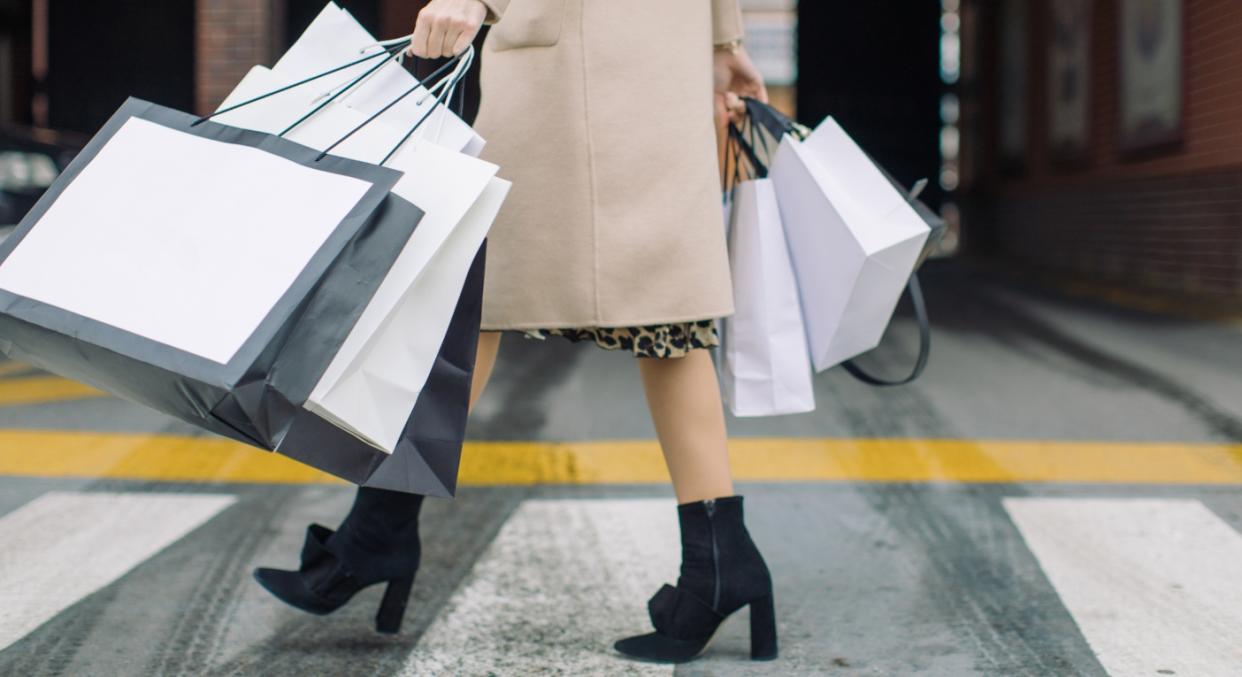How the pandemic will change the way we buy clothes

When I left my office on March 13 this year, I assumed we’d be working from home for two weeks - at most. Eight months later, the UK has now entered its second lockdown and those who can have been told to work from home until at least March next year.
I think it was around week three of lockdown that I stopped ‘dressing up’ each day as I would have if I was going into an office. Instead, activewear (read: joggers, exercise tights, loose t-shirts and comfy jumpers) became my WFH staple.
It seems I’m not alone in this. A recent survey from YouGov found that 55% of people who would regularly buy formal clothes for office wear were now less inclined to do so and, of those surveyed, 21% said they were more likely to purchase activewear than before. Over a quarter of Brits surveyed (27%) said they were also more likely to buy casual clothes than they would have been before the pandemic.
Read more: These will be the biggest dating trends of 2021
“In March, we saw a massive increase in requests for loungewear compared to the month prior and I have definitely seen an increase in requests for comfy clothes since then,” Katie Eastwood, Stylist Ambassador for online personal styling service Stitch Fix tells Yahoo UK.
“There is no denying that our wardrobes have been through a transitional period since March, as many people are now working from home and are favouring a more casual aesthetic. Tight fitting jeans, crisp shirts and stilettos have been put (lovingly) into storage to make way for key, quality pieces that deliver on comfort, style and versatility.
“With the rise of Zoom calls, we have seen an ‘above the keyboard’ trend emerge, with a focus on exciting tops and statement jewellery that can be seen by co-workers and friends - no one needs to know if you are wearing slippers too! As many of us adventure outside for daily exercise and fresh air, we have also seen more customers requesting layering pieces that can be worn indoors as well as outdoors on walks, hikes and trips to the park.”
Watch: Sustainable wardrobe essentials
In summer, Eastwood says there was a rise in demand for soft trousers and skirts. Now that the cooler months have arrived, she’s seen an increase in requests for knitted dresses, cosy knits and cardigans to wear at home.
Personally, I could probably list on one hand the amount of clothing I’ve brought in 2020 - my latest purchases being a pair of slippers and cosy cardigan from M&S. Data from the RSA found that, during the first lockdown, over 50% of people bought less clothing.
What does this mean for our long-term shopping habits? RSA’s data says that 52% of people surveyed intend to make long term changes to their fashion consumption, and a third of women say they will purchase fewer items of clothing in the future.
Read more: These bakers are selling more brownies than ever after turning to TikTok during lockdown
“Since the start of the pandemic, there has been a shift in both brands and consumers as they move towards a more mindful way of shopping,” Eastwood says.
“The days of dinners out, birthday parties and large social events have temporarily been put on hold, thus allowing people to clear out their wardrobes and reflect more on the pieces they really need. Whether it be the realisation that our wardrobes are bursting with clothes we’ve only worn once, or that the shorts we wore twice over the summer are already coming away at the seams - it makes you think a bit more about the garments you own and what purpose they serve.”
Eastwood adds that a growing number of Stitch Fix customers are looking towards more sustainable materials, products and brands. The RSA reports that Gen Z is paving the way towards a more sustainable shopping future, with 70% of 16-24 year olds intending to modify their consumption habits and a third of Gen Z’s intending to support brands with strong ethical and environmental policies.

“[Post-pandemic] people will definitely have a more intentional wardrobe and I envisage this to be a casual aesthetic bursting with versatility,” Eastwood says. “Consumers will start to buy less in quantity and instead focus on the quality of their clothing as well as where they are purchasing from.
“The pandemic has definitely spotlighted the community retailers, independent shops and boutiques that have been hit hard by reduced footfall and high rental prices. As a result, people have become more aware of their purchasing power and how they can work to support those struggling during these challenging times.”
Read more: How to fight the urge to stockpile, according to psychologists
Workplace fashion, in particular, is where Eastwood predicts the largest shift.
“As the majority of the country has become accustomed to wearing more casual attire in their home offices, there will be a desire for versatile workwear that can be worn from bike to boardroom and the idea that a suit or shirt must be worn to appear professional, seems outdated in our new normal,” Eastwood continues.
“It’s more about optimising usage and feeling comfortable, confident and authentically you - that is after all, when people produce their best work.”
Sustainable and comfortable, it seems, is the way of our fashion future.



